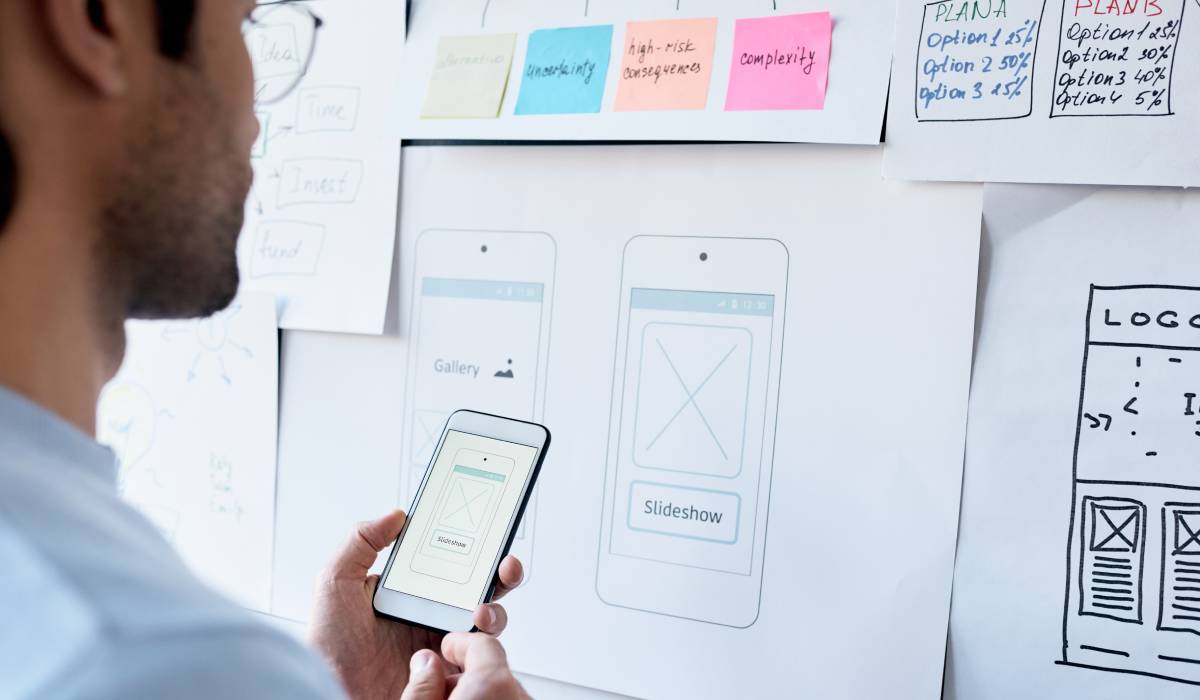When design works across every screen, users barely notice it—and that’s the point.
In 2025, UX isn’t about screens anymore. It’s about continuity.
Today’s users don’t just use multiple devices—they live across them. Their morning begins with a smartwatch ping, flows into a tablet scroll, shifts to a laptop tab, and ends with a voice command.
The transitions are expected to be fluid and sharper than ever: the experience should never feel interrupted. This evolving user behaviour exposes a critical design challenge and an opportunity too.
This brings us to a question –
How do we make users feel like they never switched devices at all?
That’s the promise of multimodal UX design—a unified experience that flows across screens, inputs, and moments.
At its core lies Zero UI: the absence of design and the presence of invisible, intelligent interaction.
Zero UI means:
- Frictionless, clutter-free experiences
- Interfaces that listen, gesture, and adapt
- UX that follows users—not devices
Wondering how to get there?
This blog unpacks 6 core principles to help you design smarter, more intuitive, and truly seamless UX.
Design for Behaviours, Not Screens
The future of UX is not tethered to device dimensions but to human behaviour. Instead of static UI grids tailored for specific devices, multimodal systems must be grounded in task flow, user goals, and intent recognition. For instance, designing for voice-first experiences means mapping out conversation flows rather than screen interactions (Gartner, 2024).
Key takeaway: Map actions to context, whether they’re wrist flicks, voice commands, or neural intent.
Mobile-First is Now Context-First
While mobile-first design has been foundational in responsive UI strategy, multimodal design extends this to “context-first” thinking. The interface must adapt not just to screen size, but also to input method (touch, voice, gesture), ambient conditions (lighting, motion), and user state (emotion, cognitive load). Designing for voice, gestures, and ambient interfaces demands a system that senses, predicts, and responds accordingly.
Example: A wearable fitness device that dims visual elements while enabling voice commands during motion-intensive activities.
Fluid Layouts and Scalable Elements
From smartwatches to ultra-wide monitors, interface elements must scale dynamically without compromising usability. Fluid grids, vector-based graphics, and percentage-based containers ensure layout integrity across all screen resolutions and pixel densities. This is crucial for ensuring visual and interactional consistency in invisible interfaces.
Design Tip: Embrace scalable typography and SVGs to ensure clarity in high-density displays and accessibility tools.
One Design Language, Infinite Extensions
A consistent design language acts as the DNA of your digital product. Systemic choices—spacing, typography, motion, and feedback—should adapt fluidly across form factors. Google’s Material Design and Apple’s Human Interface Guidelines both embrace this principle through modularity and hierarchy.
Guiding Principle: Establish a universal design grammar that scales across modalities, from tactile to neural.
Performance is UX
Regardless of form factor, performance shapes perception. In multimodal environments, even a millisecond delay can break continuity. Optimize load times by lazy loading content, deferring non-critical scripts, and serving device-specific assets. This is particularly crucial in the context of touchless user interfaces, where latency in voice or gesture recognition degrades experience.
Pro Tip: Utilize CDN strategies and device profiling to adapt content intelligently.
Accessibility and Adaptivity by Default
As the diversity of devices expands, so does the diversity of users. Designing accessible UI components isn’t just ethical—it’s foundational to scalability. High-contrast modes, screen reader compatibility, keyboard navigation, and emotion-aware UI are becoming industry standards.
Harvard Business Review (2023) reported that inclusive design leads to a 38% increase in user satisfaction across digital platforms.
Conclusion: Towards a Truly Invisible Interface
Zero UI is changing the rules where less interface means more impact. It’s no longer about screens; it’s about seamless, sensory-first experiences that move with your users.
At BlendX, we help you build products that don’t just look good across devices—but feel effortless everywhere.
Ready to design experiences your users won’t even notice—but will never forget?




